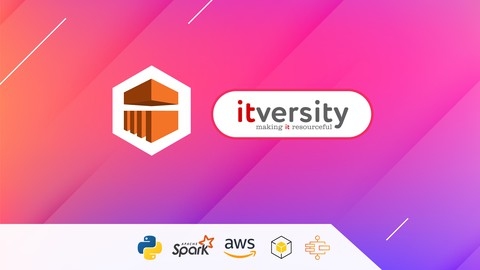Amazon Elastic MapReduce (EMR) is a powerful cloud-based service that allows you to easily process vast amounts of data using open-source frameworks like Hadoop, Spark, and Hive.
Mastering EMR opens up a world of possibilities for data engineers, allowing them to efficiently handle big data workloads, analyze petabytes of information, and build sophisticated data pipelines.
This can lead to valuable insights, improved decision-making, and a competitive edge in today’s data-driven world.
Finding a good EMR course on Udemy can be challenging, with so many options available.
You need a course that is comprehensive, engaging, and taught by experts who can guide you through the complexities of EMR.
You want to ensure the course covers both the theoretical foundations and practical aspects of using EMR, with hands-on projects to solidify your learning.
For the best EMR course overall on Udemy, we recommend Mastering AWS Elastic MapReduce (EMR) for Data Engineers.
This course stands out for its comprehensive approach, covering everything from the fundamentals of EMR to advanced concepts like Spark application development and deployment.
The instructor provides clear explanations, practical examples, and hands-on exercises, ensuring you build a strong foundation in EMR and gain the skills necessary to tackle real-world data engineering challenges.
While this is our top pick, there are other great options available.
Keep reading to discover a range of EMR courses on Udemy tailored to different learning styles and goals, from beginner-friendly introductions to advanced courses focused on specific EMR features and applications.
Mastering AWS Elastic Map Reduce (EMR) for Data Engineers
This comprehensive course is an excellent resource for anyone looking to master Amazon Elastic MapReduce (EMR) and become a proficient data engineer.
It takes you on a journey from the fundamentals of setting up an EMR cluster to the development and deployment of sophisticated Spark applications.
Right from the start, you’ll get hands-on with the essential tools like Visual Studio Code and PowerShell, setting up your Windows environment for success.
You’ll then dive deep into the core of EMR, learning the ins and outs of planning, creating, and managing your clusters.
The course provides practical experience in connecting to EMR Master Nodes using SSH and explores various methods for data management, including AWS S3, HDFS, and Glue Catalog.
You’ll be immersed in the development life cycle of Spark applications on EMR.
You’ll learn to write code using Spark and Pyspark, and gain valuable experience deploying your applications to EMR.
You’ll even delve into the power of AWS Step Functions, learning how to create robust workflows that automate your entire data pipeline.
From deploying Spark applications as steps within an EMR cluster to managing EMR clusters using boto3, and even crafting complex AWS Step Functions state machines, this course covers a wide range of techniques.
Simple Hadoop with EMR
This course provides a solid introduction to the world of Hadoop and Amazon’s Elastic MapReduce (EMR), focusing on practical application and hands-on learning.
You’ll begin by grasping the fundamentals of Hadoop, its inner workings, and its potential benefits.
The course utilizes a practical approach, starting with a simple example of counting vowels and consonants in text.
This allows you to gain hands-on experience with MapReduce, a core component of Hadoop, and build a foundational understanding of its principles.
As you progress, you’ll delve into more complex scenarios, exploring how EMR can be used for real-world tasks like finding the largest difference in a dataset.
You’ll learn how to set up projects, write code for mappers and reducers, and package and run your applications.
This practical experience equips you with the skills to analyze large amounts of data using EMR and AWS S3.
You’ll also encounter real-world scenarios like handling job failures and successes in EMR, further enhancing your understanding of the platform.
While the course covers the fundamentals, you may find it beneficial to have some prior experience with programming and data analysis concepts.
Nonetheless, the course’s clear explanations and step-by-step approach make it accessible to individuals with varying backgrounds.


